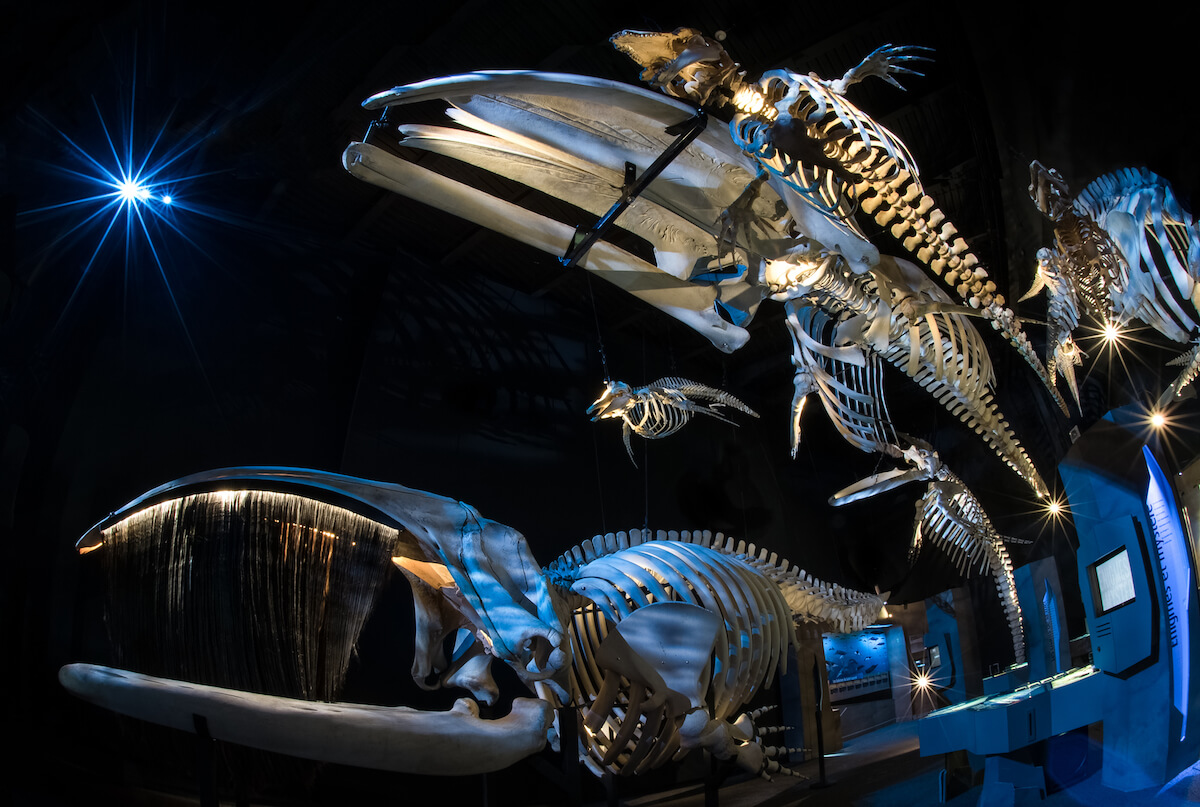[Continuation of article “What does GREMM do in winter? (2/2)”]
Every winter, when the whales leave the Estuary, many of you wonder what goes on behind the closed doors of the CIMM: but what does the GREMM’s staff actually do in winter? Last week, we told you about the data analyses and research projects that were progressing well, as well as the activities carried out by the UMM. But research and the maintenance of our marine mammal emergency line are not GREMM’s only major undertakings. This week, discover what our educational teams do during the colder months!
Exciting educational projects for summer 2022
In winter, behind the closed doors of the CIMM, the now-busy team is already preparing for the return of the crowds. And this year, a big change is in the works! More precisely, the CIMM’s projection hall will be converted into an immersion room! This metamorphosis is due to the launch of the Window on Belugas project, which will allow the public to enter the fascinating universe of these animals in an unparalleled way, whether in real or delayed time. This activity will not be limited to Tadoussac, as three land-based observation sites – Pointe Noire, Baie Sainte-Marguerite and Gros Cacouna – will also be set up to offer visitors the opportunity to witness field research activities and interact with scientists on the job. In an effort to make sure that everything is ready come summer, project manager Marie Spehner has been working hard for months to train her team, acquire all the necessary equipment and develop educational content!
Winter is also the perfect time to update the CIMM exhibition and add new elements: we have a couple of nice little surprises in store for next summer’s visitors! Our chief naturalist Mélissa Greene has finished recruiting new naturalists, who are an essential link in offering visitors a high-quality experience in this one-of-a-kind museum in North America.
With renovations going well and the CIMM scheduled to reopen on May 14, we can hardly wait to share with you all the museum’s new features this year!
What about Whales Online?
We continue to inform you! Every week, we track marine mammal sightings in the St. Lawrence in our Observations of the Week column! And no matter what time of year it is or what kind of weather we’re having outside, we are always ready to field your questions and enjoy trying to answer them in a straightforward and accurate manner in Whale Q&A.
From time to time, the Field Notes section allows us to share the unique experiences of researchers who enjoy close encounters with whales. Biopsies of belugas in the St. Lawrence, observation of humpback whale ‘rumbas’ in Mexico, expeditions to the Azores… we love sharing with our readers what life is like out in the field!
We also collaborate hand in hand with the Marine Mammal Emergencies team to keep you in the loop regarding their interventions and the challenges they face in their work. We generally take the opportunity to answer questions frequently asked by the public wondering what to do if one should encounter a marine mammal carcass or an animal in difficulty.
Lastly, we keep a close eye on the latest happenings in the world of whales. Whatever the season, cetologists around the globe continue to relate their discoveries and one of our missions is to share them with you in our News column. How do we do it? Well, we read scientific articles and select the most interesting and relevant information. We even take the opportunity to speak directly with the researchers to better understand their findings. Then we attempt to summarize everything in easy-to-understand language by following a few simple steps!
We are also impatiently getting ready for summer! Because with the arrival of spring and the recent return of whales to the Estuary, another great season of whale tales is just over the horizon!







